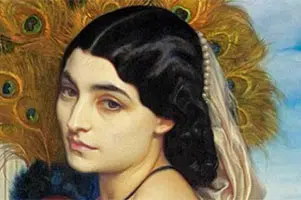 The Greek word aisthētḗs , which refers to “perception through the senses” , came into French as esthète . The term arrived in our language as aesthete .
The Greek word aisthētḗs , which refers to “perception through the senses” , came into French as esthète . The term arrived in our language as aesthete .
An aesthete is an individual for whom art is a primary value . Furthermore, someone who worships beauty or who has knowledge about aesthetics is called an aesthete.
For example: “My grandfather is an aesthete who has a house full of artistic works” , “A fashion photographer must be an aesthete capable of recording the beauty in each shot” , “The Japanese filmmaker is usually considered an aesthete who lends "too much attention to the visual elements and does not concentrate on the content of his films."
The follower of aestheticism is also known as an aesthete: a doctrine that privileges beauty over any other feature of a work of art. As an artistic movement, aestheticism emerged in Britain in the late 19th century .
Another way to name an artistic movement is through the concept of artistic style . In any case, it is a trend that many artists share throughout a certain period in history, with a common philosophy.
According to aesthetes, art aims to exalt beauty . Social and moral issues, in this framework, remain in the background. That is why aestheticism is considered the opposite of materialism and utilitarianism.
Oscar Wilde y Joris-Karl Huysmans son dos autores considerados estetas. Se trata de escritores que, a través de la literature, apostaron por la sensibilidad y el refinamiento.
It is important to note that people outside of poetry often describe this art form as exalting beauty above all else, and this could not be further from the truth when we consider all the types of poetry that exist. currently. Just as in cinema and narrative, among other areas, there are those who focus on the beautiful even exaggerating or distorting the attributes of their characters and environments, but there are also authors who pursue rawness or who focus on questions rather than for the answers .
 Putting beauty before social problems, moral issues or deep reflections about the various issues that matter most in society are not characteristics that are considered acceptable today, but rather quite the opposite. We must understand that the first aesthetes existed in another era and needed to break barriers that have now become obsolete. Happiness is a much more relevant objective than beauty, which is why contemporary art pursues problems that hinder our fulfillment.
Putting beauty before social problems, moral issues or deep reflections about the various issues that matter most in society are not characteristics that are considered acceptable today, but rather quite the opposite. We must understand that the first aesthetes existed in another era and needed to break barriers that have now become obsolete. Happiness is a much more relevant objective than beauty, which is why contemporary art pursues problems that hinder our fulfillment.
In France there were some trends similar to aestheticism, such as symbolism and decadence, so some consider that aesthetes created their own version of these movements. Symbolism in literature acquired considerable importance, to the point of being among the most relevant of the second half of the 19th century. In short, and based on the manifesto of the Greek poet Jean Moréas , he opposed objectivity in description, false sensitivity, declamation and teaching .
With respect to decadentism, we can say that it covered both philosophy and literature and has two predominant features: themes in which skepticism reigns; an exaggerated refinement.
In colloquial language , an aesthete is usually mentioned as a person who knows how to recognize beauty and directs his or her life toward contemplating and appreciating it . That admiration, on the other hand, generates pleasure .
